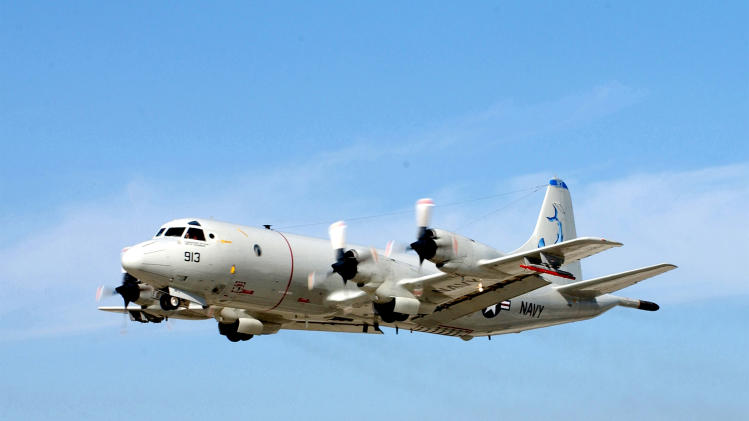Search for lost jet tests China, US capabilities
TOKYO (AP) — Finding the missing Malaysian jetliner would be a coup for any of the more than two dozen countries out there looking. But for China and the United States, it's a lot more than that — it has been a chance for the two rival powers in the Pacific to show off what they can do in a real-life humanitarian mission across one of the world's most hotly contested regions.
The hunt has major ramifications for Beijing, which has been rapidly improving its military while aggressively challenging neighbors over territorial disputes. Washington is looking to prove it's still the top dog to allies worried about how seriously it takes the threat China poses to the Pacific status quo.
So far, neither country has come up with anything significant. But they have been vigorously waving their flags.
China has the most at stake and has been taking an unusually high-profile role. Almost immediately after Malaysia Airlines Flight 370 disappeared March 8, China dispatched its largest-ever rescue flotilla to the initial search area in the South China Sea, which Beijing considers its own backyard.
Beijing sent four warships and five coast guard and civilian patrol service vessels, along with helicopters and fixed-wing surveillance aircraft. Among the warships are two of China's largest and most advanced amphibious docking ships. The 20,000-ton vessels are equipped with helicopters and a range of small boats, including up to four hovercrafts.
"On the one hand, China is simply doing its duty in orchestration with other countries," said Ni Lexiong, a military expert at Shanghai's University of Political Science and Law. "On the other hand, this operation offers an opportunity to assess the Chinese navy's willpower, efficiency and ability to carry out operations far from home, especially in comparison with the U.S."

FILE - This Jan. 2003 file photo provided by the U.S. Navy shows a P-3 Orion shortly after takeoff from Naval Air Station North Island, Calif. The U.S. Navy decided that long-range naval aircraft were a more efficient way to search for missing Malaysia Airlines Boeing 777 in such a vast area, so will be relying on P-3 and P-8 planes, while the two destroyers go back to normal duties. (AP Photo/US Navy, Mahlon K. Miller, File)
Fresh off a massive relief effort after Typhoon Haiyan devastated the Philippines — which China barely got involved in — the U.S. was once again quick to respond. Within days, the Navy had two destroyers in the South China Sea participating in the search, the USS Kidd and the USS Pinckney. Both are both based in San Diego but were training in the area when the jet disappeared.
Since the flight was bound for Beijing and two-thirds of the passengers were Chinese, the public expects the government and military to pull out all the stops. With more Chinese traveling abroad than ever — 100 million last year, more than double the figure for 2009 — they are increasingly reliant on their government to assist and protect them when overseas, and they are looking for proof that it can fulfill that role.
National prestige is also a huge factor.
Though the U.S. remains the dominant power in the Pacific, China deeply craves that role. Sizable chunks of its defense spending, which has grown significantly over the past two decades to $131 billion, have been devoted to boosting its ability to project force for both military and humanitarian missions.
China's Achilles' heel is its relative lack of experience, not having fought in a major conflict since the end of the Korean War in 1953. Its leaders have been trying to compensate with more realistic training scenarios, including joint maritime search and rescue exercises with other nations.

In this Wednesday, Sept. 11, 2013 photo, a China coast guard vessel numbered 2506, top, sails along the Japan coast guard ship Katori in the continuous zone of Japan's territorial waters off the disputed East China Sea islands called Senkaku in Japanese and Diaoyutai in Chinese. A big problem for China is its bad blood with virtually all of its neighbors, many of whom are key players in the search of missing Malaysia Airlines Boeing 777. China has territorial disputes with India, Japan, the Philippines and Vietnam, and many other countries in the region are wary of its efforts to exert more control over Pacific shipping lanes that could impact their freedom of trade. (AP Photo/Kyodo News) JAPAN OUT, MANDATORY CREDIT

No comments:
Post a Comment